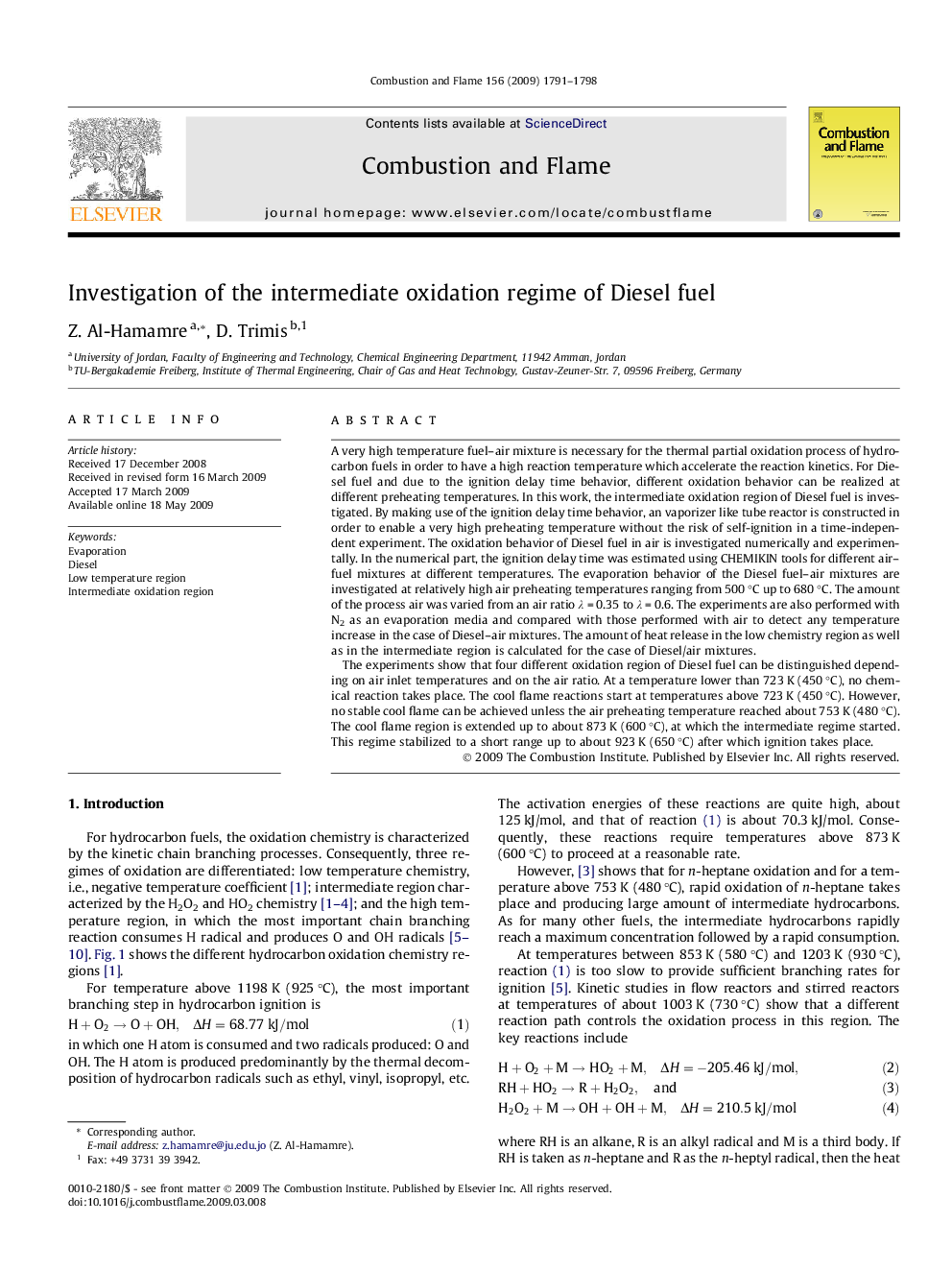| Article ID | Journal | Published Year | Pages | File Type |
|---|---|---|---|---|
| 166841 | Combustion and Flame | 2009 | 8 Pages |
A very high temperature fuel–air mixture is necessary for the thermal partial oxidation process of hydrocarbon fuels in order to have a high reaction temperature which accelerate the reaction kinetics. For Diesel fuel and due to the ignition delay time behavior, different oxidation behavior can be realized at different preheating temperatures. In this work, the intermediate oxidation region of Diesel fuel is investigated. By making use of the ignition delay time behavior, an vaporizer like tube reactor is constructed in order to enable a very high preheating temperature without the risk of self-ignition in a time-independent experiment. The oxidation behavior of Diesel fuel in air is investigated numerically and experimentally. In the numerical part, the ignition delay time was estimated using CHEMIKIN tools for different air–fuel mixtures at different temperatures. The evaporation behavior of the Diesel fuel–air mixtures are investigated at relatively high air preheating temperatures ranging from 500 °C up to 680 °C. The amount of the process air was varied from an air ratio λ = 0.35 to λ = 0.6. The experiments are also performed with N2 as an evaporation media and compared with those performed with air to detect any temperature increase in the case of Diesel–air mixtures. The amount of heat release in the low chemistry region as well as in the intermediate region is calculated for the case of Diesel/air mixtures.The experiments show that four different oxidation region of Diesel fuel can be distinguished depending on air inlet temperatures and on the air ratio. At a temperature lower than 723 K (450 °C), no chemical reaction takes place. The cool flame reactions start at temperatures above 723 K (450 °C). However, no stable cool flame can be achieved unless the air preheating temperature reached about 753 K (480 °C). The cool flame region is extended up to about 873 K (600 °C), at which the intermediate regime started. This regime stabilized to a short range up to about 923 K (650 °C) after which ignition takes place.
